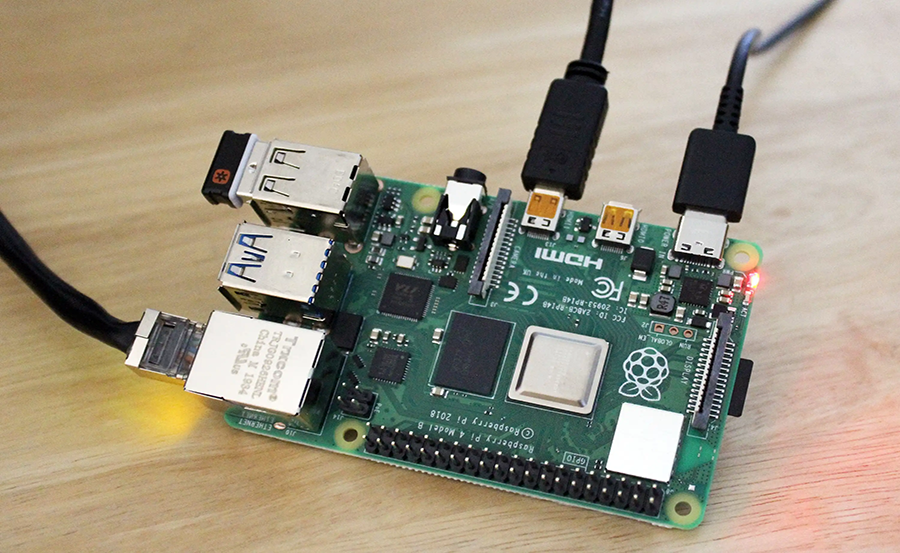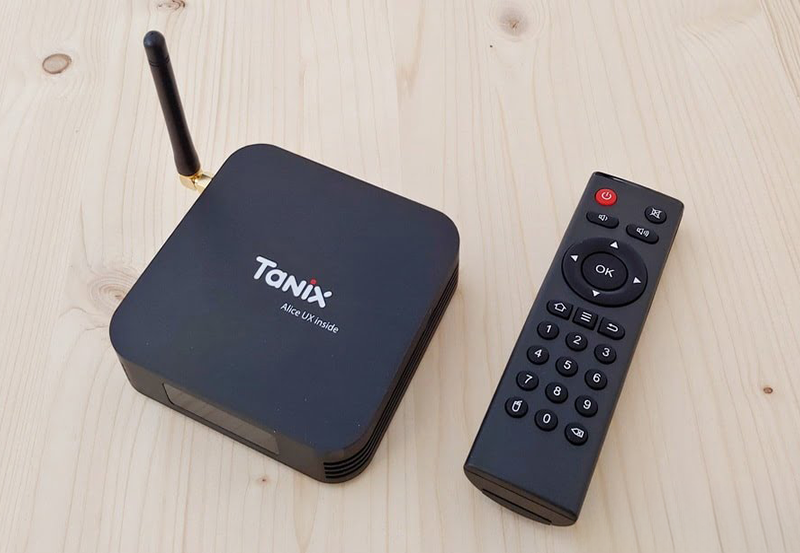In an increasingly urbanized world, understanding and managing air quality is more important than ever. Whether you’re a tech enthusiast, an environmentally-conscious individual, or a professional in environmental science, monitoring air quality is a pivotal step towards a healthier life and a cleaner planet. And guess what? You don’t need to be a tech wizard to start monitoring air quality around you—thanks to the Raspberry Pi and a variety of accessible sensors. Throughout this expansive guide, we will explore how you can leverage this modest computer to gain insights into air quality, while also touching on a unique topic that plays a crucial role in your digital life: the Best IPTV Subscription. Let’s dive into the digital world of air quality monitoring and see how it intersects with cutting-edge IPTV services.
Why Monitor Air Quality?
The Impact of Air Quality on Health and Environment
Understanding air quality is no longer just a concern for policymakers or industrial sectors; it directly impacts personal health, agriculture, and even global climate patterns. Poor air quality is linked with numerous respiratory and cardiovascular diseases, making it crucial for individuals to monitor the air they breathe. Moreover, monitoring helps in planning outdoor activities based on pollution levels, thereby avoiding unnecessary health risks.
Further, air quality plays a significant role in environmental degradation. By monitoring pollutants like carbon dioxide, nitrogen oxides, and particulate matter, individuals and communities can take preventive measures to combat environmental harm.
Quick Tip:
Enjoy the best Affordable IPTV services with access to premium channels, on-demand movies, and sports events.
The Relevance of Raspberry Pi in Monitoring Air Quality
Raspberry Pi, a compact and affordable single-board computer, has revolutionized how technology enthusiasts and professionals alike approach DIY projects, especially in environmental monitoring. Its versatility extends to building sophisticated air quality monitoring systems, showcasing real-time data through user-friendly interfaces. This unprecedented accessibility turns complex data into understandable insights, elevating personal and community-based efforts to track air quality. Moreover, the vast community support around Raspberry Pi projects ensures ample resources and guidance to both novices and experts seeking to harness its power for environmental health.
It’s remarkable how combining a Raspberry Pi with sensors not only helps individuals grasp environmental intricacies at a personal level but also functions as a microcosm of larger-scale environmental monitors used worldwide.
Step-by-Step Guide to Set Up Your Air Quality Monitoring System
The Essentials: Raspberry Pi and Sensor Selection
Before diving into the setup, it’s essential to have the right equipment. A standard Raspberry Pi kit and the appropriate sensors are indispensable for your air quality monitoring project. This includes:
- Raspberry Pi Board – Model 3B+ or 4 are great for such projects.
- Sensors – Common ones include MQ135 for general air quality, DHT11 for temperature and humidity, and PMS5003 for particulate matter.
- Power Supply and Case – Ensure the Raspberry Pi is safely powered and protected.
- MicroSD Card – This will be your storage device, needing at least 16GB.
- Cables and Breadboard – Essential for wiring and connectivity.
These components form the backbone of your setup, ensuring you can effectively monitor and analyze air quality data.
Setting Up the Hardware Connections
Once your components are gathered, the next step involves connecting your sensors to the Raspberry Pi. This usually involves plugging sensors into the GPIO (General Purpose Input Output) pins of the Raspberry Pi, typically using a breadboard and jumper wires for easier management.
Ensure you follow the pin configuration instructions specific to your sensors to avoid any mishaps. This step is crucial, as the accuracy of your monitoring significantly depends on proper hardware connections.
Installing Software and Configuring the Raspberry Pi
With physical assembly out of the way, it’s time to breathe life into your project through software. Begin by installing Raspbian OS on the MicroSD card, which serves as the operating system for Raspberry Pi. You can use applications like Balena Etcher to smoothly flash the OS onto the card.
After setup, connect your Raspberry Pi to your network via Wi-Fi or Ethernet and complete the necessary updates. This sets the stage for installing Python and relevant libraries like Adafruit’s CircuitPython to interface with your sensors digitally.
Data Interpretation: Understanding and Acting on Air Quality Metrics
Decoding Sensor Readings
Now that your setup is operational, the next vital component involves interpreting the data churned out by your sensors. Typical air quality sensors will provide readings on multiple factors, such as temperature, humidity, concentration of different pollutants, and particulate matter levels.
Each of these parameters has safe exposure limits defined by environmental agencies. Familiarize yourself with these benchmarks to understand if the air quality is within healthy ranges. By analyzing these metrics, you can tailor your lifestyle choices to minimize health risks caused by pollution.
Leveraging Data for Proactive Measures
The goal of monitoring air quality should extend beyond data collection. Use the insights derived to make informed decisions. If your area shows elevated levels of certain pollutants, consider indoor air purification methods or wearing masks when outdoors.
Furthermore, community awareness can be a powerful tool. Sharing data with neighbors or local authorities can prompt collective efforts towards improving air quality, showcasing the broader impact of individual monitoring endeavors.
Promoting Sustainability with IoT and Raspberry Pi
Entrepreneurial Opportunities in IoT
Venturing into air quality monitoring, particularly with Raspberry Pi, isn’t just an educational pursuit but a business opportunity as well. IoT is reshaping industries by offering novel solutions to traditional problems, including environmental concerns.
For innovators and entrepreneurs, this domain offers the potential to develop commercial air quality monitoring solutions catering to diverse sectors, from healthcare to smart cities, opening pathways to both sustainability and profitability.
Best Practices for a Sustainable Digital Future
The intersection of modern technology and sustainability pivots critical advancements in maintaining ecological balance. While increasing digital integration, include sustainable practices such as energy-efficient components and recycling old equipment.
Moreover, cohesive integration of these IoT devices within existing infrastructures, such as in smart homes or cities, translates to better environmental monitoring, improved public health, and more informed policymaking, fostering a truly sustainable digital future.
Exploring the World of IPTV: Entertainment Meets Connectivity
The Convergence of Air Quality Monitoring and IPTV Services
Amidst your journey in monitoring air quality with Raspberry Pi, imagine merging this knowledge with the convenience of IPTV services. Best IPTV Subscription services often offer high-quality streams, transforming an ordinary viewing experience into an interactive digital odyssey.
This kind of service allows constant access to global content libraries, from live broadcasts to international shows, without geographic limitations. Elevating your digital lifestyle, BestIPTV Subscription packages can cater to varied entertainment preferences while utilizing the same internet setups as your Raspberry Pi projects.
Choosing the Best IPTV Subscription: Smart Entertainment Decisions
Opting for a Premium IPTV Service is a wise decision for those desiring expansive content access. However, evaluating criteria such as streaming quality, service reliability, and content variety is essential before subscribing.
Renowned as the Best IPTV Subscription, services like BestIPTV offer unmatched content quality and customer support. They ensure seamless integration with your existing internet frameworks, allowing you to relax after long hours of air quality data analysis with uninterrupted streaming of your favorite shows.
Closing Thoughts: Bridging Environmental Insight and Digital Entertainment
Embarking on the journey of understanding air quality through Raspberry Pi is not just a step toward personal health, but a march towards community well-being and environmental sustainability. It embodies a proactive stance towards a cleaner environment. Meanwhile, intertwining this knowledge with top-tier IPTV services reminds us of the digital age’s infinite possibilities.
Ultimately, the confluence of environmental monitoring and digital entertainment underlines a pivotal transition to a tech-forward, sustainable lifestyle. It showcases how innovation and leisure can coexist harmoniously, enriching human experiences while evolving digital landscapes.
FAQs on Monitoring Air Quality and IPTV Subscriptions

What sensors do I need for monitoring air quality?
For a comprehensive setup, consider MQ135 for air quality, PMS5003 for particulate matter, and DHT11 for temperature and humidity—all compatible with the Raspberry Pi platform.
How do RTP services like Best IPTV Subscription enhance digital experiences?
The Best IPTV Subscription enhances digital interaction by providing uninterrupted access to a vast array of global content through reliable, high-quality streaming, enriching both online and offline experiences.
Can air quality data influence community health initiatives?
Yes, community health initiatives greatly benefit from localized air quality data, encouraging both individual and collective measures for pollution control and public health improvement.
Does Raspberry Pi support scalability in environmental projects?
Absolutely. Raspberry Pi’s versatility and vast developer support allow scalability from personal projects to more significant environmental monitoring initiatives, ensuring adaptability to various scales of application.
What are the long-term benefits of integrating air quality monitors in urban settings?
Long-term benefits include improved public health outcomes, strategic urban planning based on pollution data, and heightened community awareness and engagement towards a sustainable future.
Is setting up a Raspberry Pi air quality monitor challenging for beginners?
Not necessarily. With a good guide and community support, beginners can set up and operate Raspberry Pi air quality monitors effectively, gaining valuable technical and environmental insights in the process.
Understanding TiVo’s Content Recommendation Engine



